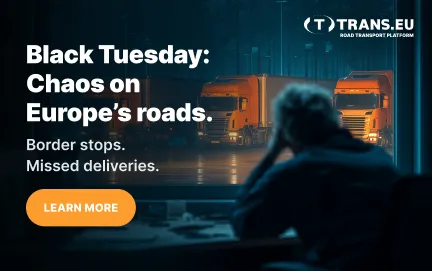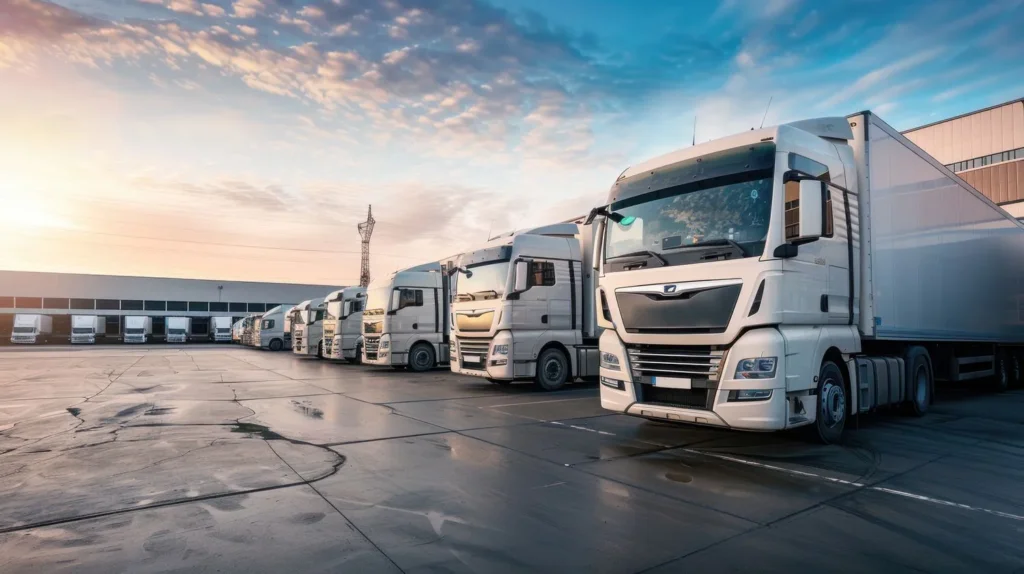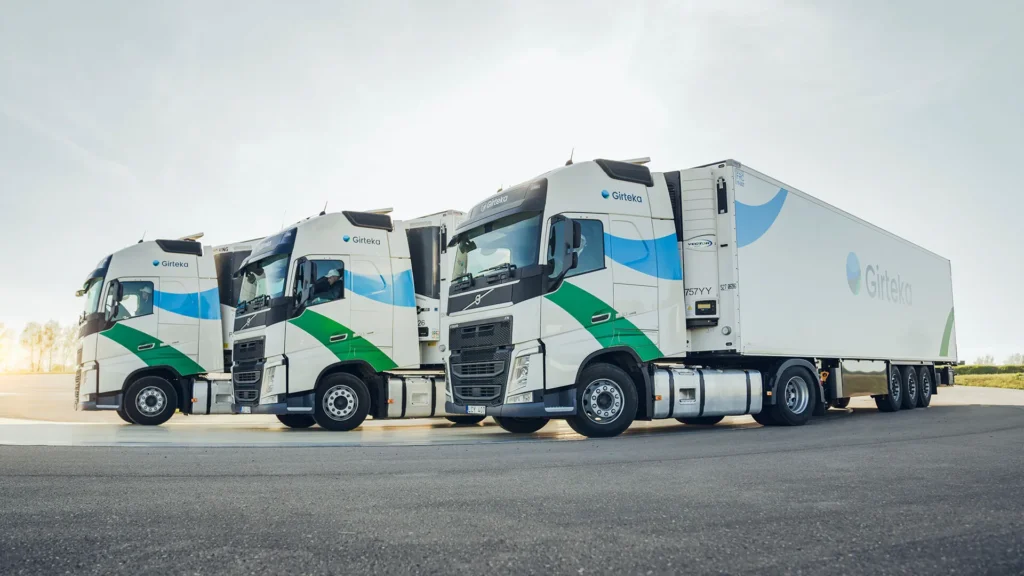The UK Government still advises persons to donate money through trusted charities and humanitarian partners, rather than donating goods as unsolicited donations. Although sending items is well-meaning, it can obstruct supply chains and delay more urgent support from getting through.
In the case of aid that’s already in the works, hauliers might feel intimidated how to get a truck loaded with various items from different senders through the post-Brexit customs procedures. That’s why we’ve put together this guide.
Customs at the UK border
HMRC announced on March 10th that moving aid and donations to the people of Ukraine was made easier thanks to a customs easement. Businesses, charities and community organisations sending aid from GB ports are now able to make a customs declaration by speaking to customs officers or simply by the act of driving through a port.
They no longer need to complete and submit electronic customs declarations to HMRC before exporting these goods, and smaller movements do not need to use the Goods Vehicle Movement Service to pass through ports where it is in operation.
The easement also removes other customs formalities, such as needing to notify HMRC when the goods have been exported.
Anyone requiring advice about transporting humanitarian aid to Ukrainian refugees can contact the free-to-use Export Support Service (ESS) or ESS helpline 0300 303 8955 which can be used by individuals, businesses or charities.
Who can use the simplified customs process?
There are still some requirement humanitarian aids need to meet to be eligible for the simplified customs.
First of all, all goods must be destined for the victims of the humanitarian crisis in Ukraine. The goods must not be destined for, or travel through, Russia or Belarus.
Only certain goods can be taken out of Great Britain using this simplified process. This may include goods such as clothes, blankets and sanitary products, but other goods may qualify.
Goods HGVs cannot take the following out of Great Britain using the simplified process:
- Controlled goods such as medicines that are not available over the counter;
- excise goods such as fuel, alcohol and tobacco;
- prohibited and restricted goods such as military goods, dual use goods, goods subject to sanctions.
Dual-use goods can be put to military or civilian purpose, and include (but are not limited to):
- protective equipment (for example, equipment which provides chemical, nuclear or biological protection)
- chemicals (for example, any chemical on the Chemical Weapons Convention list)
- high specification telecommunications equipment employing cryptography
How to move goods as freight in a larger vehicle
A large vehicle is a vehicle that can carry more than 9 people and weighs more than 3.5 tonnes (for example, a heavy goods vehicle (HGV).
Taking goods through locations using the Goods Vehicle Movement Service
If the freight will be transported through a location using the Goods Vehicle Movement Service, operators will need to:
- Get an EORI number starting with GB.
- Register for the Goods Vehicle Movement Service.
- Try to pack goods in groupings of similar items before travelling.
- Get a ‘declaration by conduct’ goods movement reference using the Goods Vehicle Movement Service by selecting the ‘oral or by conduct declarations’ option.
- Carry a note of the types of goods.
- Present the goods movement reference at the port for check-in so the driver can board.
Taking goods through other ports and airports
If the port or airport the freight is travelling through do not use the Goods Vehicle Movement Service, operators must check with their shipping line or airline about what steps they need to follow before moving their goods.
Customs at the EU border
The Dutch border
On 5 March 2022, the Dutch Embassy in the UK said that the customs process had been simplified between the UK and the Netherlands.
#StandWithUkraine️ 🇳🇱🇬🇧🇺🇦 | Customs procedures in the Netherlands have been temporarily simplified for humanitarian aid to #Ukraine for goods arriving from the UK. Humanitarian relief goods are now treated as non-commercial goods, so that they can be transported without delay. pic.twitter.com/kRduCeHLEV
— Netherlands Embassy 🇬🇧 (@NLinUK) March 5, 2022
Customs procedures in the Netherlands have been temporarily simplified for humanitarian aid to Ukraine for goods arriving from the UK. Humanitarian relief goods are now treated as non-commercial goods, so that they can be transported without delay.
To make this possible, an oral declaration can be made for these goods. As a result, the normal procedures for import and transit can be dispensed with for the time being.
However, for consignments with a value above € 1,000, proof can be requested showing that it concerns humanitarian relief goods. This may be a statement from the person making the declaration or who owns the goods, showing that the goods are made available ‘free of charge’ to the victims of the war in Ukraine with a global description of ‘goods’.
Declaration in AGS is also possible. Import declarations can also be made for these goods. This can be done without any duties.
Fill in the declaration as follows:
- Shipping country: UK
- Country of Origin: UK
- Commodity code: 9919 0000 60
- Goods description: goods for the benefit of disaster victims (Ukraine)
- Preference code: 100
- Do not enter a document code.
The Dutch customs information line (+ 31 45 574 30 31, charges may apply) could be able to provide further information.
The French border
The French government announced that “goods addressed for the benefit of disaster victims” moving under customs code 9919000060 would not be subject to SPS controls, reducing the required documentation, reported Loadstar at the beginning of the week.
The required data is as follows:
- a packing list;
- the name and address of who organised the donation;
- EORI;
- the registered receiving charity’s details;
- the type of goods;
- the transport designation.
According to The Loadstar, once the driver is supplied with these documents, suppliers could provide hauliers with the required UK clearance paperwork, GMRs (outwards and return) for those without a GVMS, and the French smart border reference.
Morgan Cargo’s general manager Storme Valentine told the magazine that after some initial difficulty the company managed to get several aid trucks through the border and offered their help for those looking for support.
Morgan Cargo can be contacted on +441753 376 820.
Deutsche Bahn rail corridor is free to use for humanitarian aids
Another way to send humanitarian aid to Ukraine is using the rail corridor Deutsche Bahn (DB) launched this week. DB Schenker has opened several of its sites in Germany to accept donations, they pack the aid into containers and take them to Ukraine by freight trains on DB Cargo’s European rail network.
The service is open to all and free of charge.
These are the places where DB Schenker accepts donations. Map by Deutsche Bahn
DB has set up a hotline for the rail corridor to Ukraine. Freight can be registered here, especially for companies and large donations, and collection can be coordinated.
The hotline (+49 (0) 30-720220640) operates on weekdays from 8 a.m. to 8 p.m.
More tips for a safe journey
The Federal Office for the Transport of Goods (BAG) in Germany has provided guidance on the rules for the delivery of humanitarian aid to Ukraine.
“If you are going to Ukraine, do not forget to bring important documents with you. We recommend that you should also have some cash on you, possibly in foreign currency, such as euros or US dollars,” advises BAG. “Load up the vehicle and bring enough drinking water and food and one or more tanks of fuel,” the BAG spokesperson added.
According to the BAG, it is very important for the driver to prepare for the mobile network or power supply to be suddenly cut off. Therefore, German officials also advise bringing printed maps, a power bank, flashlights and batteries.
Road toll exemptions
Trucks carrying out aid transport are exempt from road tolls in Germany – however, there are some requirements you must comply with.
Road tolls can be released for:
- special transport of humanitarian goods to a collection or distribution point in Germany or abroad and return of the vehicle to its usual place of use;
- empty pallets or containers used for transporting aid can be returned free of charge;
Tolls must be paid on the following journeys:
- preparatory journeys prior to the delivery of humanitarian aid, including the collection of humanitarian aid and transportation to the loading point;
- for the return journey, if the vehicle is carrying commercial goods or is otherwise used for the transport of non-unloading goods.
What evidence is needed?
It must be proved that the goods are humanitarian aid. Evidence shall be provided by a list of data drawn up by the aid organization or private aid initiative containing the following information:
- aid organization / private aid campaign (address, contact person),
- humanitarian aid items detailed by quantity (eg number of bags of clothes, number of cartons, pallets, etc.)
- loading point
- collection / distribution point (address, contact person)
- the vehicle used for transport (license plates, owner).
This list must be available for inspection.
This list is also required for the toll exemption of humanitarian consignments in the case of temporary registration with Toll Collect GmbH.
Automatic toll collection equipment installed in HGVs should be switched off during free humanitarian aid. This can be done with the TC-OBU, BAG explains.
In the case of transport abroad, the certificates, permits and import and export documents required for the transport of the special goods to the given country may be presented.
There should be some kind of sign, at least a piece of paper behind the windshield of the vehicle with the words “Humanitarian Aid Delivery” (Hilfstransport).
See the leaflet published by BAG for more details .






